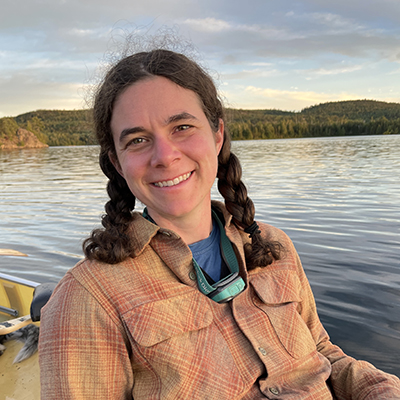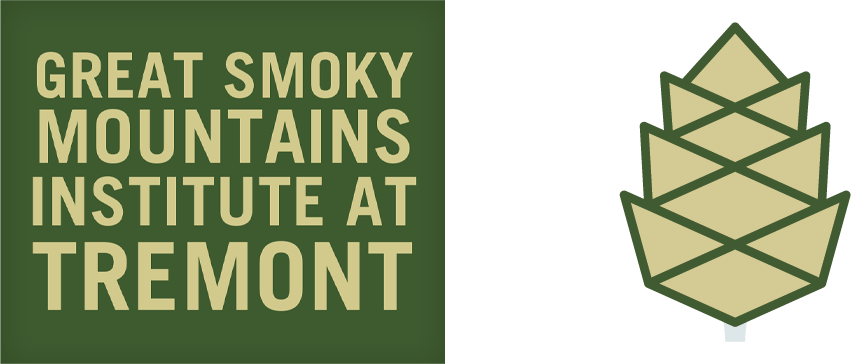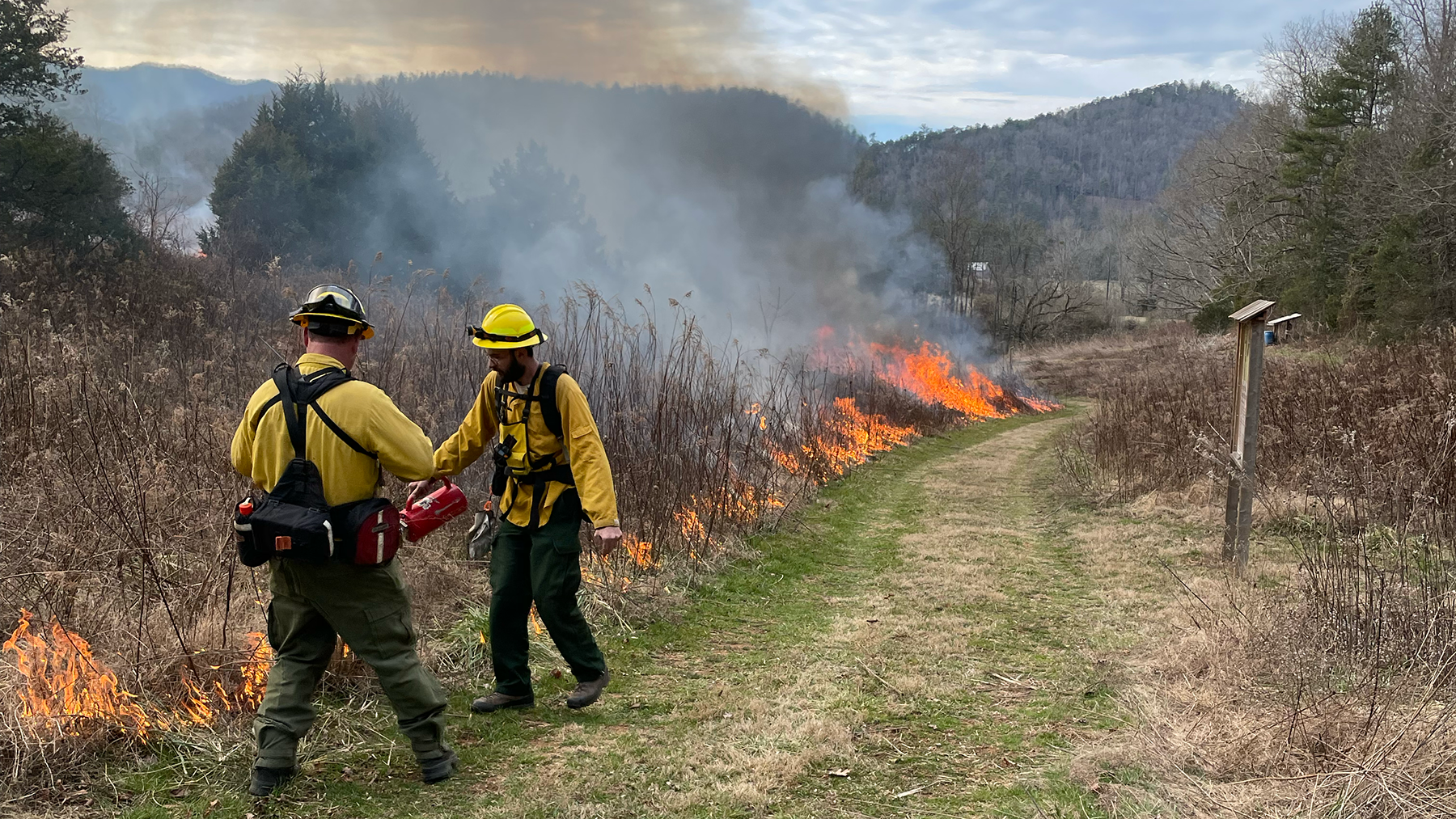On a cold day at the beginning of February, we set about nine acres of land on fire on our second campus.
Though the results look darkly dramatic, this was part of a carefully planned prescribed burn conducted by the Tennessee Department of Forestry. These trained professionals kept safety top-of-mind, waiting until weather and moisture conditions were right for controlling and containing the burn.
Prescribed burns are part of our ongoing effort to transition the fields on our second campus from a monoculture of fescue to a diverse array of native grasses and plants.
Why fire?
Native grasslands in the southeast United States are hotspots of biodiversity. Two-thirds of all rare plants in the southeast and 60% of the nearly 6,000 native plant species in the region can be found in native grasslands.
When we purchased the land in 2019, the fields at our second campus were dominated by fescue, a non-native grass often planted to provide forage for cattle. While the cows love it, fescue lacks the benefits of native grasses; it grows densely, out-competing native grasses and wildflowers, offering virtually no food or habitat for small mammals, pollinators, and songbirds.
 Historically, grassland ecosystems were shaped and maintained by a combination of indigenous land management practices, large grazing mammals, and periodic fires. According to recent research, most historic fires were started by indigenous people; they used fire to promote food-bearing plants, create farming plots, and control pests and diseases. Today, we look to this indigenous wisdom as we work to protect and enhance our ecosystems – prescribed burns not only mimic natural processes, but they prevent wide-spreading destructive wildfires while supporting the growth of native plants.
Historically, grassland ecosystems were shaped and maintained by a combination of indigenous land management practices, large grazing mammals, and periodic fires. According to recent research, most historic fires were started by indigenous people; they used fire to promote food-bearing plants, create farming plots, and control pests and diseases. Today, we look to this indigenous wisdom as we work to protect and enhance our ecosystems – prescribed burns not only mimic natural processes, but they prevent wide-spreading destructive wildfires while supporting the growth of native plants.
The aftermath…
This is the third prescribed burn we have hosted on our second campus. We’re only a few years into this restoration process, but we’ve already seen noticeable increases in biodiversity in our fields.
Hawks have been spotted hunting for prey, while sparrows are actively foraging in the brushy asters. Sightings of American woodcocks performing their distinctive mating displays in the fields highlight the positive ecological impacts of these conservation efforts.
We could also argue that the brilliant blooms of goldenrod, milkweek, joe-pye, and ironweed of late summer are a vast improvement to the landscape.
The use of prescribed burns represents a proactive approach to land management, a foundational piece of our work on our second campus. Learn more about our approach to land management as a tool for restoring native ecosystems and supporting a rich tapestry of regional biodiversity.
Video by Pete Crowley; images by Pete Crowley, David Bryant, Scott Hughes and the Tennessee Division of Forestry.
About the Authors

Elizabeth Davis is the Field Programs Specialist at Great Smoky Mountains Institute at Tremont. She is a native East Tennessean who grew up exploring and backpacking in the Southern Appalachians before moving away to the snowy mountains of the northeast. She received a B.A. in Environmental Studies and Conservation Biology from Middlebury College, worked at John C. Campbell Folk School in North Carolina, spent a few seasons at the Ashokan Center in the Catskills, and hiked from Maine to Georgia on the Appalachian Trail before finding her way back home. She has worked at Tremont full-time since 2014.

Erin Rosolina is the Great Smoky Mountains Institute at Tremont’s Marketing Director. She grew up in the mountains of western North Carolina where trillium, bloodroot and galax were everyday friends. Erin earned a degree in sustainable community development from Berea College in Kentucky, and then went on to receive the Compton Mentor Fellowship. Erin has worked in marketing with regional and national nonprofit organizations for over a decade and has been at Tremont since 2021.











